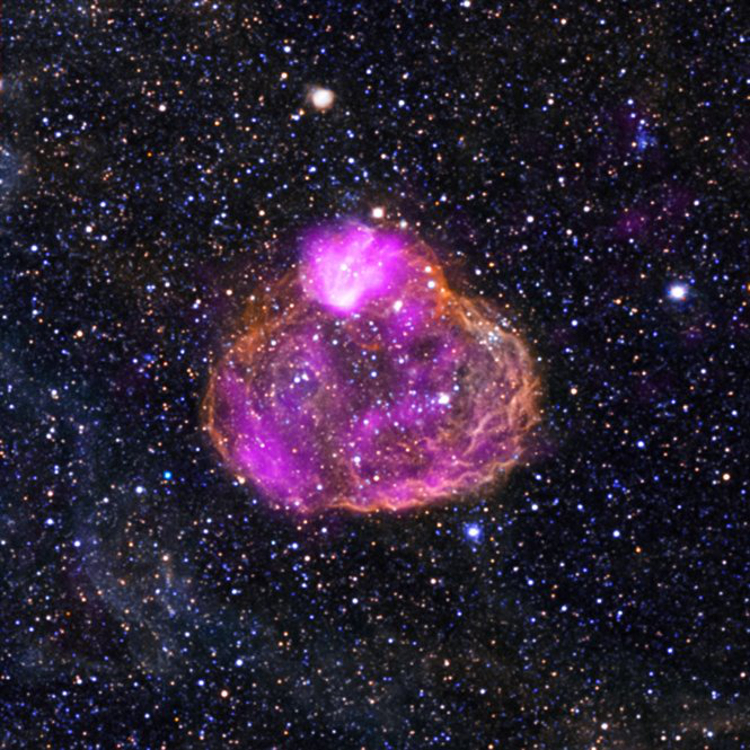
 Credit: X-ray: NASA/CXC/Univ of Michigan/A.E.Jaskot, Optical: NOAO/CTIO/MCELS
Credit: X-ray: NASA/CXC/Univ of Michigan/A.E.Jaskot, Optical: NOAO/CTIO/MCELS
Purple and Gold Super Bubble
The Universe hosts a line-up of heavy hitting stars. These monsters, dozens of times more massive than our Sun, power through the interstellar medium, injecting mass and energy via strong stellar winds and supernovae explosions. This activity creates swept-out regions called superbubbles which glow in X-rays, due to superheated gas within the bubble, and glow in visible light due to cooler material at the bubble's edge. Understanding the evolution of the energy balance in these bubbles is important in order to understand how the chemistry of our Universe evolves. The image above shows a composite picture of a 500-light year wide superbubble called DEM L50 in the Large Magellanic Cloud, one of the Milky Way's companion galaxies. X-ray emission (from the Chandra X-ray Observatory) is shown in purple while optical light is shown in gold. The X-ray emission from this superbubble is surprisingly strong, about 20 times more than predicted by standard theories, apparently due to the effects of a supernova, and evaporation of a large amount of matter from the cool massive outer walls of the bubble.
Published: February 4, 2013
<
HEA Dictionary ● Archive
● Search HEAPOW
● Other Languages
● HEAPOW on Facebook
● Download all Images
● Education ● HEAD
>

Each week the HEASARC
brings you new, exciting and beautiful images from X-ray and Gamma ray
astronomy. Check back each week and be sure to check out the HEAPOW archive!
Page Author: Dr. Michael F. Corcoran
Last modified Monday, 26-Feb-2024 17:45:11 EST


